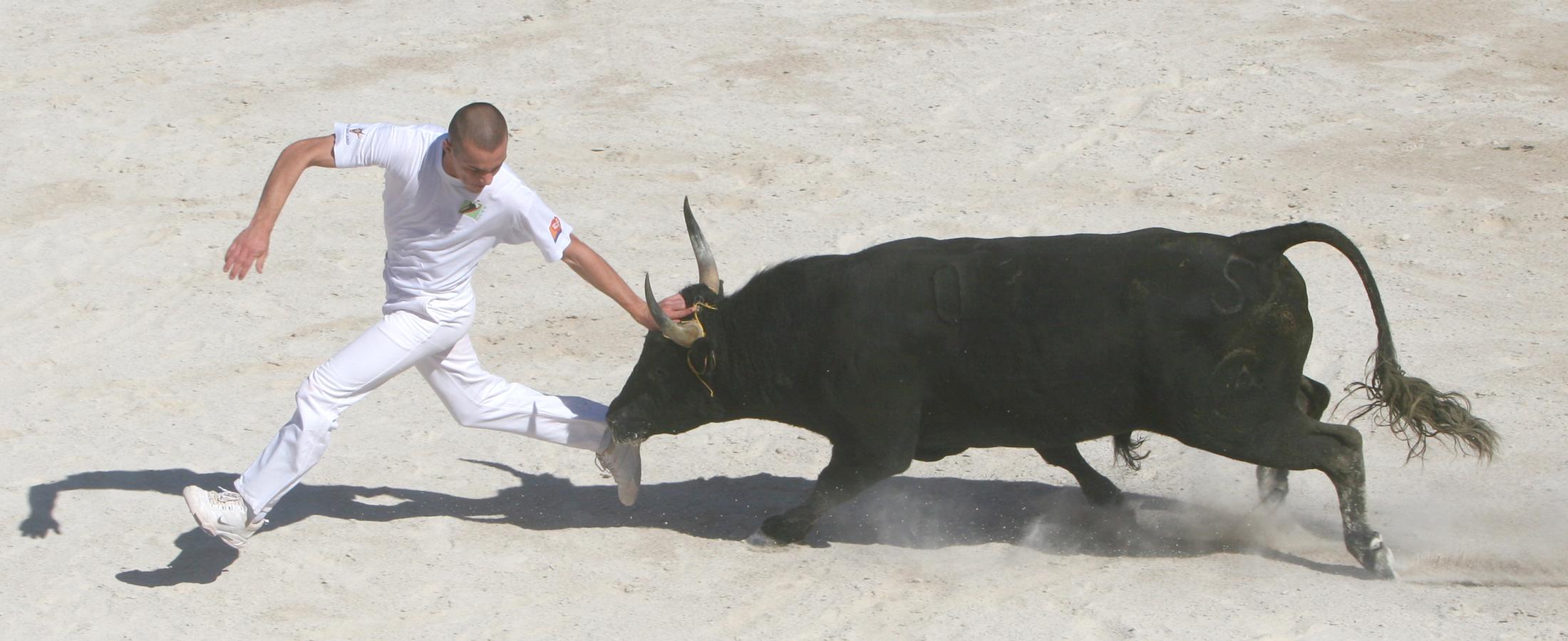

Every year, the Camargue races bring together bull racing enthusiasts. La Cocarde d'Or, the most prestigious of them all, is the ultimate race that all "razeteur" dreams of winning.
From the beginning of April until the end of October the races take place in the Arles Arena and in the small villages surrounding Arles. La Cocarde d'Or takes place each year on the first Monday of July (01 july 2019) (the first race took place on 2 July 1928) in Arles arena. It is the main event of the taurine season, and the most prestigious of the Camargue races. The final at the "Trophée des As" takes place in Arles every other year at the beginning of October.
During summer, in July and August, the Arles arena organises the Camargue races every Wednesday and Friday at 17:30. They are organised in cooperation with the school of razeteurs
A short history of the race
The "jeu taurin" (bull game) lies at the origin of the races: animals of all shapes and sizes and farmhands come together to fight and play with the bull. The oldest record of the origins of the Camargue races dates from 1402 : a race was organized in Arles in honour of Louis II, count of Provence. Later, towards the end of the 19th century, the 'jeu taurin' became less cruel, where it was only men that would play with the bull: the 'attributs' were fixed on the bull's horns (red-white-and-blue rosettes, flowers, scarves in the colours of the herd) and had to be removed by the young enthusiasts.
In 1890s bull breeders became aware of the importance of the "Camargue" race of bulls, whose morphology and fighting spirit suits it more to racing rather than to work or meat production. So, since the beginning of the century, small fortunate arenas began to see bulls of great calibre clash with men that had mastered the art of the 'razet'. This is when a rosette began to be stuck on the bull's horns and prizes were awarded to whoever managed to remove the 'attribut'. It was each man to their own! Regulations regarding the rosettes and the 'crochets' were adopted. From then on, only official razeteurs dressed in white were accepted into the ring. Different 'attribut' objects were added later on. The French Federation for Camargue Races is currently the official authority that regulates all the races.
The Camargue Bull
Spirit, intelligence and speed are main qualities of the Camargue bull…
... qualities which it expresses through the Camargue race or in the free race. The free race is an integral part to the traditions of the Camargue, it excites passions and moves the crowds.
Contrary to bullfighting, it is the bull is the centre of attention and not the bullfighter, even though some razeteurs are very well known. These bulls are the true heroes, and sometimes have long careers
Every bull has a name and this is written on the posters for the Camargue races, differing from the bullfights, where only the names of the matadors figure. Some even have a statue set up in villages like Goya, others like Rami, have a tomb in the farmhouse where they spent all their life. .
Approximately 18 000 to 20 000 bulls are raised in 150 herds, of which atleast half have a staff of over 100heads. Production Camargue breed ("diraco biou") is primarily intended to show bullfighting (camargue races,abrivado, bandido).
Fédération Française de la Course Camarguaise
485, rue Aimé Orand
30000 Nîmes
Tél. : 04 66 26 05 35
Fax : 04 66 26 18 24
http://www.ffcc.info/
L'école de Raseteurs d'Arles